Solid-state drives (SSD) are like hard drives, but as the name suggests they have no moving parts. So not only are they more rugged than hard drives, they’re much, much faster. For a big performance boost, here are the best SSDs you can buy.
This isn’t about go-faster bragging rights though. Yes, you can copy enormous files to an SSD in record time, but it’s the massive boost that the drive will give you your computer’s responsiveness that will shock you most: applications launch almost instantly, web pages load faster, and Windows simply feels a lot faster.
SSDs come in different sizes and shapes so we’ve tested a combination of more traditional SATA as well as modern M.2 NVMe (PCIe) drives.
We’re testing internal drives here but we also have a chart of the best portable hard drives and SSDs if that’s what you’re after.
Best SSDs 2022
Seagate FireCuda 530 – Best Overall
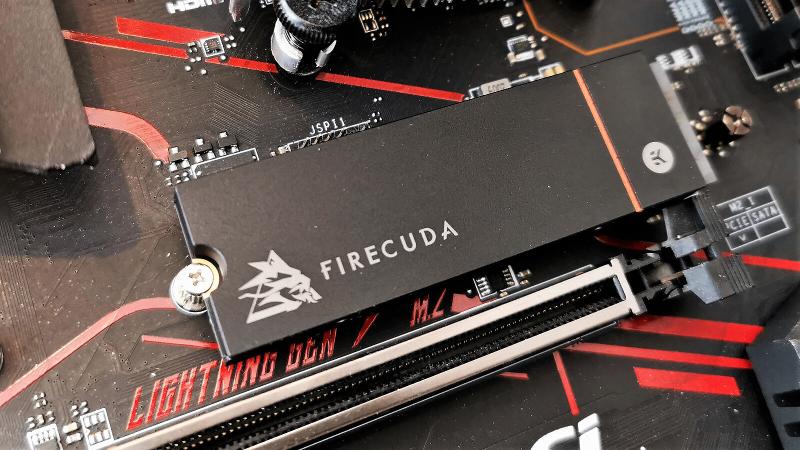
- Pros
- Blindingly quick
- Effective heatsink
- Works in a PS5
- Special warranty
- Cons
- Heatsink is a necessity
- Expensive
The FireCuda 530 delivers on everything an SSD should with stellar performance, incredible lifespan and effective thermal management if you use a heatsink.
There’s even a special warranty with three years of data recovery should the drive fail – something that’s normally reserved for enterprise-class devices.
It’s a great choice for PC and console owners who want the best-in-class PCIe 4.0 drive. You just might struggle to afford one, especially at the 4TB capacity.
Read our full Seagate FireCuda 530 review
Corsair Force Series MP510 – Best Value
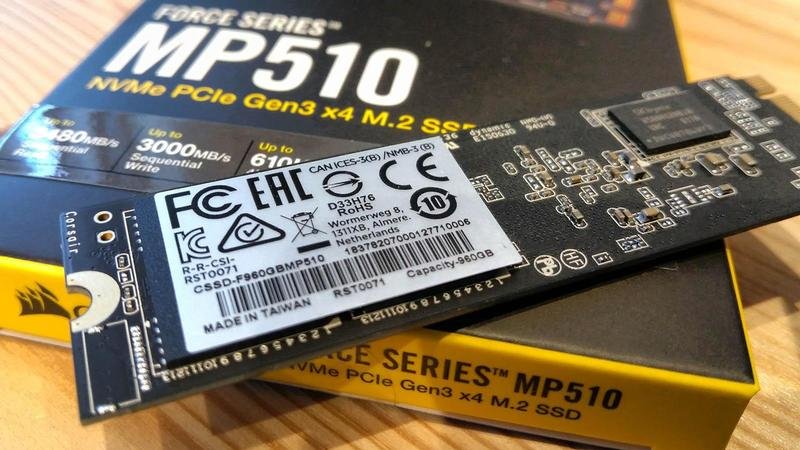
- Pros
- Affordable
- Decent performance
- Useful software
- Cons
We’re blown away by the MP510 which is a drive that offers everything you could want from an SSD. It combines performance, endurance, capacity and price.
PCI bus connected NVMe cards are historically be expensive and lower capacity, but not anymore. The newer and faster PCIe 4.0 is available elsewhere, but this is still the best choice for most users out there.
You can even get it in 4TB but the price is high enough that you should consider the jump to PCIe 4.0.
Read our full Corsair Force Series MP510 review
Kingston KC2500 – Best Value 2TB
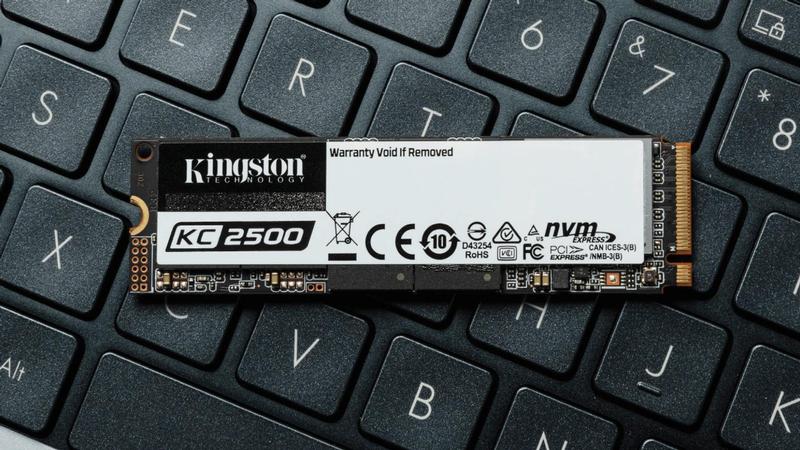
- Pros
- Great prices
- Decent speed
- Cons
Given how little the hardware has changed, Kingston has pulled something of a miracle with how the KC2500 performs.
Despite the same specs on paper compared to its predecessor, the KC2500 improves on read and write speeds purely from hardware and software engineering.
If you’re in the market for an NVMe to upgrade or build a machine, then this drive really is one of the best ways to get top-tier performance at an affordable price.
Just check whether its main rival, the Corsair Force Series MP510, can be found at a lower price at the capacity you want.
Read our full Kingston KC2500 review
WD Blue SN550 – Best Budget
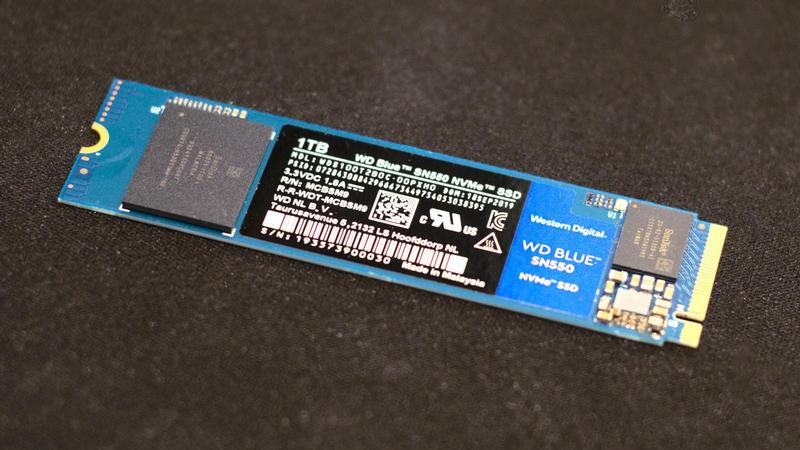
- Pros
- Very cheap
- Faster than SATA
- Cons
- Limited to 1TB
- No hardware encryption
WD has done a great job of designing an SSD that strips functionality back to the bare minimum to make it cheap enough for most PC owners to consider as an affordable upgrade.
This doesn’t provide ultimate speed or hardware encryption then but it’s still substantially quicker than any SATA drive. We’d like a 2TB model and you’re better off getting the larger capacities but the Blue SN550 comes highly recommended from us.
It’s the fuss-free way to upgrade to NVMe if you’re on a budget.
Read our full WD Blue SN550 review
Samsung 980 Pro – Best Value PCIe 4.0
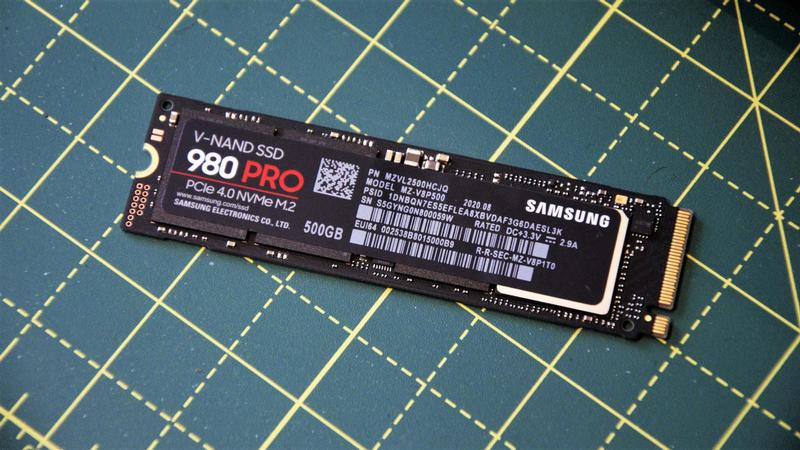
- Pros
- Double the speed of PCIe 3.0
- Works in PCIe 3.0 M.2 slots
- Cons
- Needs an X570 or B550 motherboard
- Lacks integrated heatsink
Using PCIe 4.0 technology, the Samsung 980 Pro is super fast offering double the speeds of PCIe 3.0 drives.
While the 980 Pro will work in older PCIe 3.0 slots, you won’t be getting the full speed so upgrading your motherboard might be necessary. And on that front, you’ll currently need an AMD Ryzen processor in a B550 or X570 chipset slot.
As you might expect for a new standard, the price per GB is high so upgrading is costly. Especially if you go for higher capacities, which in this case, is advisable as Samsung doesn’t offer consistent specs across the range.
Read our full Samsung 980 Pro review
WD Black SN850 – PCIe 4.0 with Heatsink

- Pros
- Excellent performance
- Up to 2TB
- Competitive prices
- Heatsink option
- Cons
- Can get warm without heatsink
- No hardware encryption
- Write speeds vary
The WD Back SN850 is as quick as the Samsung 980 Pro at most things and a little faster in a few places making it one of the best PCIe 4.0 SSDs around.
This excellent performance is available at reasonable prices and at capacities up to 2TB so there a lot of potential here if you have a system that can exploit the bandwidth of an NVMe drive like this.
However, the SN850 isn’t an instant win. Those wanting hardware encryption need to look elsewhere and WD’s heatsink model is overpriced and the module, like others, can run hot with sustained usage.
Read our full WD Black SN850 review
Samsung 970 Evo Plus – Best PCIe 3.0 Performance
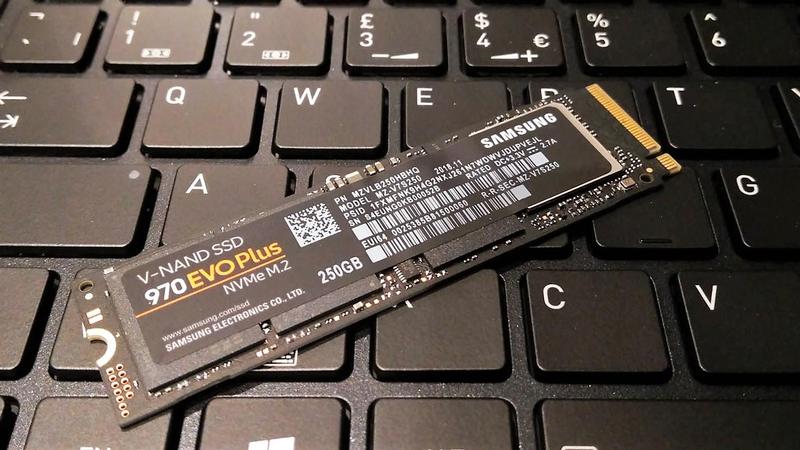
- Pros
- Solid speeds
- Good build quality
- Cons
- Better value elsewhere
- Limited to 2TB
The 970 Evo Plus is an unusual addition to Samsung’s SSD range, but a welcome one nevertheless.
It’s an even better version of the 970 Evo at around the same price so it’s really a no-brainer on that front. If it’s NVMe performance you want this Plus model is astounding.
However, the Corsair MP510 and Kingston KC2500 are cheaper making them better value if you don’t need the fastest performance at PCIe 3.0.
Read our full Samsung 970 EVO Plus review
WD Black AN1500 – NVMe Performance Without M.2 slot
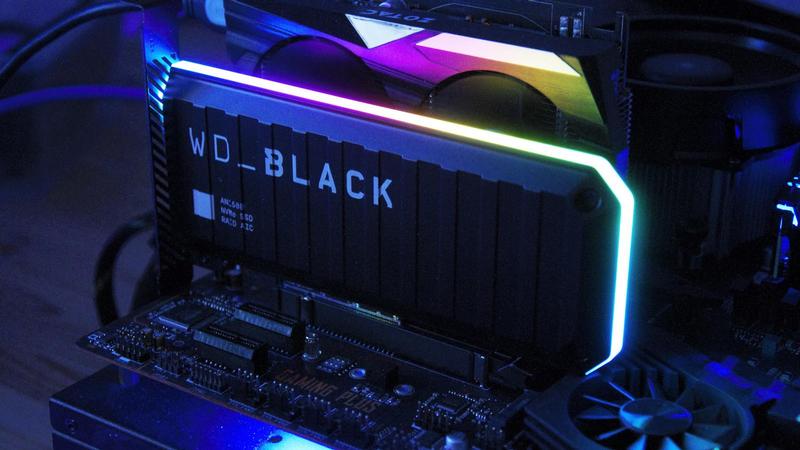
- Pros
- Faster than a single M.2 slot
- Easy to install
- Colourful LEDs
- Doesn’t need M.2 slots
- Cons
- Expensive
- No encryption
- RAID 0 config can’t be changed
It might look like a video card without fans but WD has come up with a clever solution for those wanting NVMe performance but are lacking the M.2 slot normally required.
Not only that, but it offers better than PCIe 3.0 x4 performance, although you’ll need to be careful about where you plug it in due to PCI lane issues (read the review to find out more). Since there are two cards inside, you also benefit from RAID 0 striping.
The downside is you can’t switch to RAID 1 and there’s no encryption. It’s also expensive but could be cheaper than upgrading your motherboard to M.2.
Read our full WD Black AN1500 review
Crucial P5 Plus – Affordable PCIe 4.0 Drive
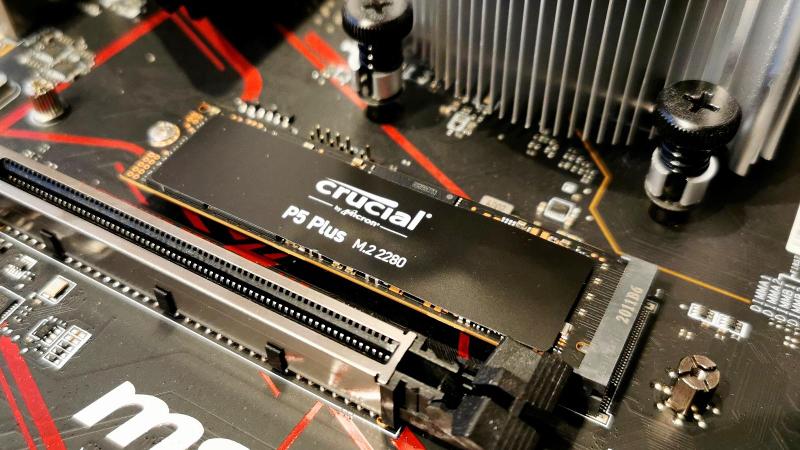
- Pros
- Affordable
- Speedy via PCIe 4.0
- Decent endurance
- Cons
- Mediocre 4K IOPS performance
- Slow underlying NAND
Replacing the popular P5, the P5 Plus fills the same niche offering better value prices for the same capacities as more expensive rivals like Seagate.
It’s also as endurance on its side but if you want the best PCIe speeds then you’ll need to look elsewhere and the P5 Plus isn’t the best choice if you are regularly dealing with large files.
The price difference to rivals isn’t as big compared to the P5 and the Samsung 980 Pro has dropped in price so you might want to go elsewhere or wait for a possible Crucial P6.
Read our full Crucial P5 Plus review
Crucial MX500 – Best SATA Drive
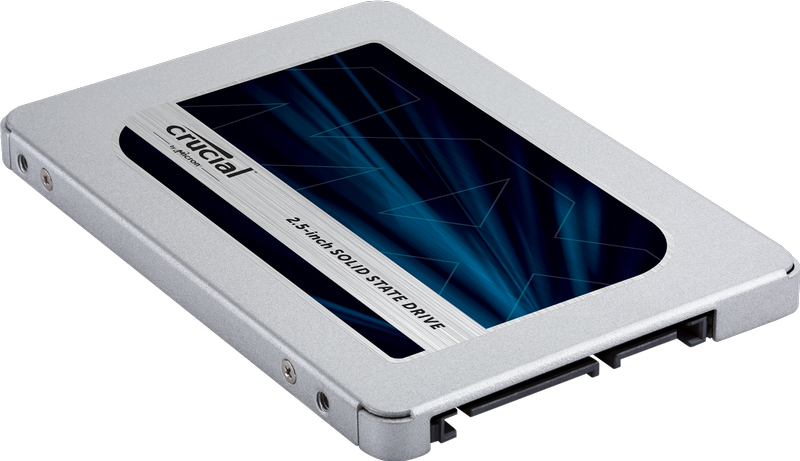
- Pros
- Cheap
- Up to 4TB
- Long lifespan
- Cons
Unless you’re going to be using this drive for editing 4K video every day or need a 4TB device, the MX500 provides an almost perfect combination of performance and price.
If you can afford the bigger capacities, you get a bonus not only in cost-per-GB, but they also have a much longer lifespan, too.
This is the SATA drive to get if you can’t go down the NVMe route.
Read our full Crucial MX500 review
Kingston KC600 – Best Upgrade Kit
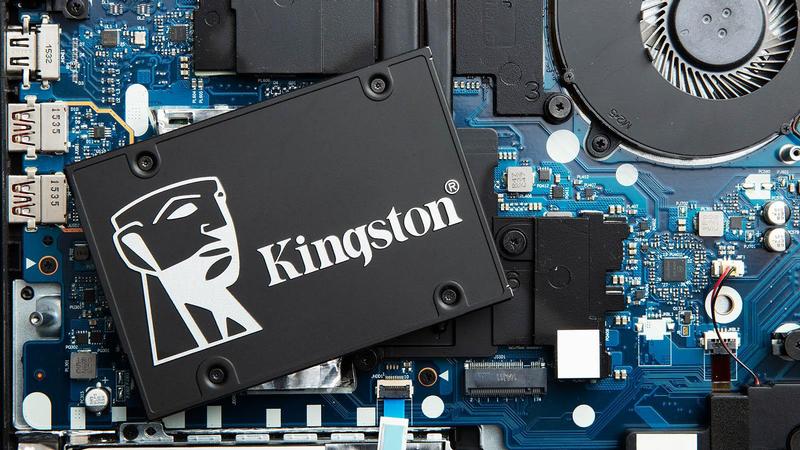
- Pros
- Cheap
- Good installation kit
- Long lifespan
- Cons
A SATA SSD is never going to beat an NVMe option but if you’re limited to the form factor for whatever reason the Kingston KC600 makes for a decent choice.
It’s comparable to the excellent Samsung 860 EVO but is available at a lower price and is just as fast.
Kingston also provides one of the best upgrade kits we’ve seen making it easier for a novice to install the drive.
Read our full Kingston KC600 review
What to look for in an SSD
For those seeking the very best performance, there’s still a case for finding the fastest rather than just choosing the cheapest SSD.
This is where you have a choice. There are two different types of SSDs: SATA and PCIe.
SATA is the type you’re probably most familiar with as it has been around for years and is used in PCs and laptops for hard drives and DVD drives. Most SATA SSDs are 2.5in wide as they’re designed to fit in laptops. But they’re also compatible with all recent PCs.
For laptop users specifically, you’ll want to also know the exact height of the SSD to ensure it will fit: some are 9.5mm thick rather than 7mm.
The other type is a PCIe SSD. It gets confusing because there are other acronyms and terminology too: NVMe and M.2. Put simply, PCIe (PCI Express) supersedes SATA because it is a much faster interface.
Most commonly you’ll see PCIe drives referred to as NVMe. This stands for Non-Volative Memory Express) but what’s most important to note is the form factor – the size of the drive – because that’s which determines if the thing will actually fit in your PC or laptop. They’re long sticks that look similar to RAM, only with the connector at the end.
This is where M.2 comes in. It’s a relatively new type of slot you’ll find on recent motherboards and in some laptops. Most M.2 SSDs are the 2280 type, which simply means 22mm wide and 80mm long. You can check your motherboard manual or contact your laptop manufacturer to find out if such a drive will be compatible.
Note: Just because an SSD has an M.2 interface does not mean it is an NVMe drive. You can buy SATA SSDs with M.2 connectors which will still be limited to SATA speeds, so watch out for this when buying. As we said, it can get a bit confusing.
If your PC’s motherboard doesn’t have an M.2 slot, don’t worry. you can buy a PCIe adapter card for around £15/$15. Some M.2 SSDs are sold with the adapter, such as Kingston’s KC1000. Or you can now get drives like the WD Black AN1500 which give you better than PCIe 3.0 performance without an M.2 slot.
PCIe comes in different versions like a lot of tech and while PCIe 3.0 is still the most common, PCIe 4.0 drives are now on sale – such as the Samsung 980 Pro. They are twice as fast but as is common with a new standard, the price is high and it’s likely you’ll need to upgrade other parts of your machine like the motherboard in order to get the most out of it.
Find out how to install an SSD in your PC.
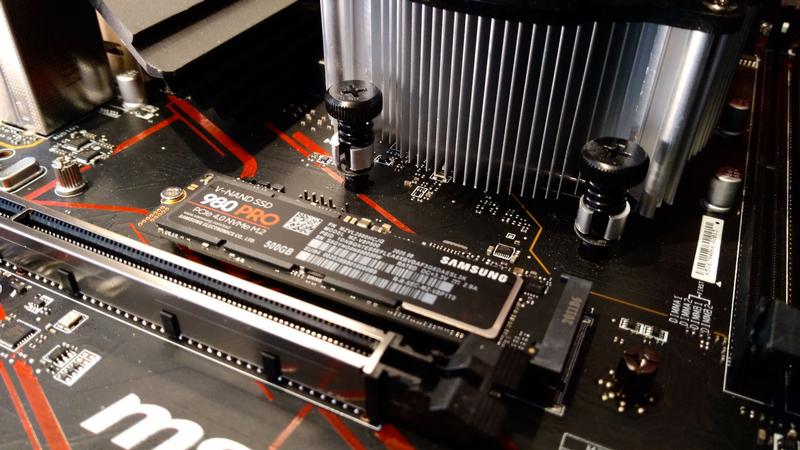
Aren’t SSDs really expensive?
It’s taken years, but we are now at the stage where an SSD is a truly affordable component for everyone. And if your budget will stretch to only £50, you can still get Crucial’s MX500 (reviewed below) for under £45 from Amazon or the jump to NVMe with the Corsair MP510 at only £43.
Sure, you get much more storage if you buy a traditional hard drive for the same money, but if you have a PC you can always install Windows and your most-used programs on an SSD and keep your music, video and photo libraries on a huge hard disk where performance isn’t as important.
How much space do I need?
Of course, the 250GB size of SSD (although you can find smaller) is going to be the cheapest and therefore the most tempting.
However, there’s nothing worse than getting a notification of your drive being full, resulting in lots of admin to sort out what to keep, delete or move. Also be careful for when smaller drives have worse specs.
So carefully consider what you’re going to need the drive for. If it’s just for the operating system and a few applications then 250GB will be fine – especially if you’re going to have another drive for storing files.
However, if this is going to be the only drive in your machine and you’re going to be storing lots of applications, files and games then you’ll need to go for more. 1TB will obviously cost more but will be necessary.
Performance
Getting back to performance, this has effectively plateaued among SATA SSDs. It’s not that flash memory has reached its limit, it’s that they’re hitting the limit of what the SATA interface is capable of.
The fastest SATA SSDs can read at around 550MB/s, but the fastest PCIe 4.0 NVMe drives can read at…
